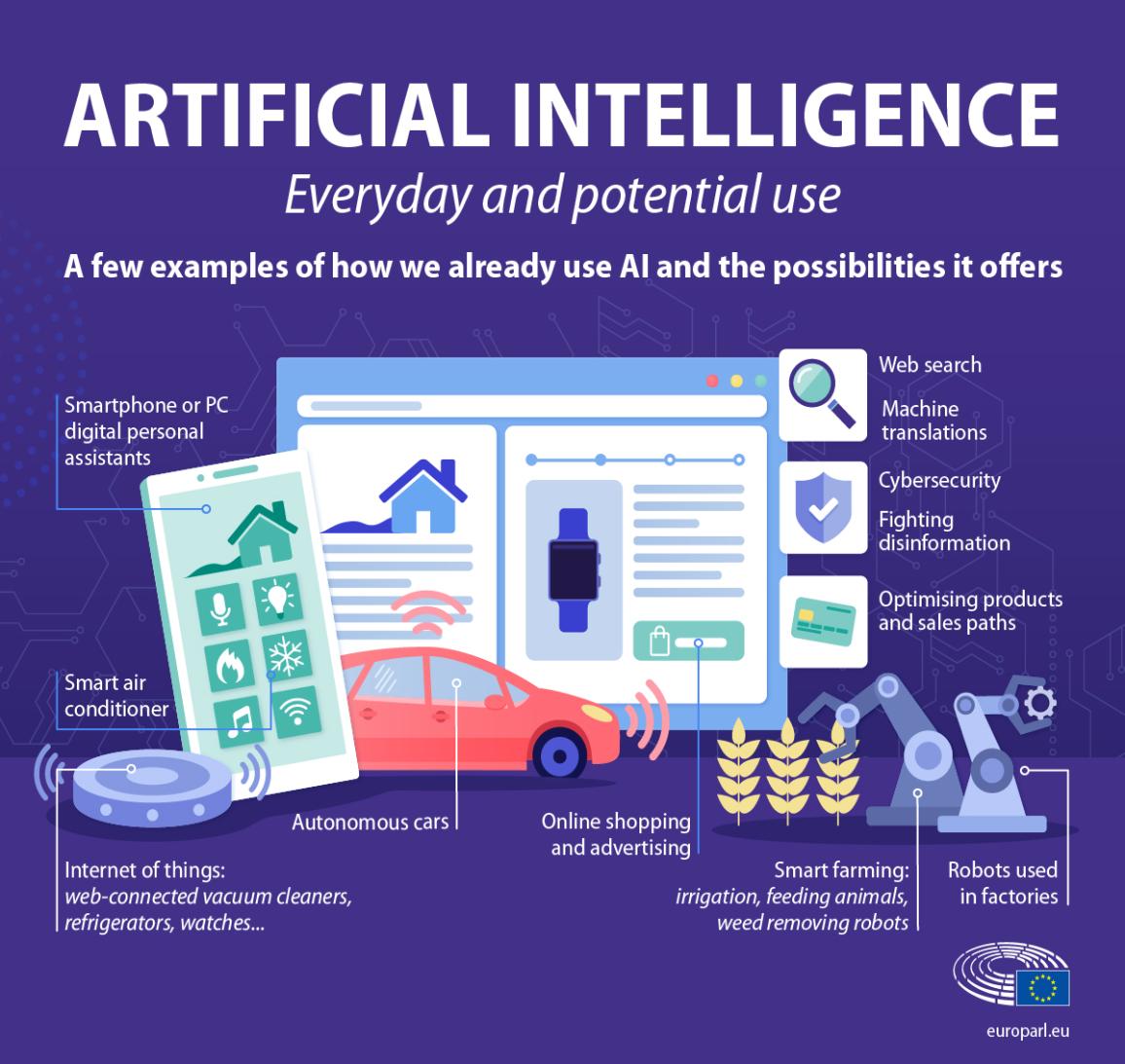What is artificial intelligence and how is it used?
Artificial intelligence (AI) is set to be a "defining future technology", but what exactly is AI and how does it already affect our lives?
What is artificial intelligence (AI)?
AI is the ability of a machine to display human-like capabilities such as reasoning, learning, planning and creativity.
AI enables technical systems to perceive their environment, deal with what they perceive, solve problems and act to achieve a specific goal. The computer receives data - already prepared or gathered through its own sensors such as a camera - processes it and responds.
AI systems are capable of adapting their behaviour to a certain degree by analysing the effects of previous actions and working autonomously.
Why is AI important?
Some AI technologies have been around for more than 50 years, but advances in computing power, the availability of enormous quantities of data and new algorithms have led to major AI breakthroughs in recent years.
Artificial intelligence is seen as central to the digital transformation of society and it has become an EU priority.
Future applications are expected to bring about enormous changes, but AI is already present in our everyday lives.
Read more about the opportunities offered by AI and the AI Act the EU is working on
Types of AI
- Software: virtual assistants, image analysis software, search engines, speech and face recognition systems
- "Embodied" AI: robots, autonomous cars, drones, Internet of Things
AI in everyday life
Below are some AI applications that you may not realise are AI-powered:
Online shopping and advertising
Artificial intelligence is widely used to provide personalised recommendations to people, based for example on their previous searches and purchases or other online behaviour. AI is hugely important in commerce: optimising products, planning inventory, logistics etc.
Web search
Search engines learn from the vast input of data, provided by their users to provide relevant search results.
Digital personal assistants
Smartphones use AI to provide services that are as relevant and personalised as possible. Virtual assistants answering questions, providing recommendations and helping organise daily routines have become ubiquitous.
Machine translations
Language translation software, either based on written or spoken text, relies on artificial intelligence to provide and improve translations. This also applies to functions such as automated subtitling.
Smart homes, cities and infrastructure
Smart thermostats learn from our behaviour to save energy, while developers of smart cities hope to regulate traffic to improve connectivity and reduce traffic jams.
Cars
While self-driving vehicles are not yet standard, cars already use AI-powered safety functions. The EU has for example helped to fund VI-DAS, automated sensors that detect possible dangerous situations and accidents.
Navigation is largely AI-powered.
Cybersecurity
AI systems can help recognise and fight cyberattacks and other cyber threats based on the continuous input of data, recognising patterns and backtracking the attacks.
Artificial intelligence against Covid-19
In the case of Covid-19, AI has been used in thermal imaging in airports and elsewhere. In medicine it can help recognise infection from computerised tomography lung scans. It has also been used to provide data to track the spread of the disease.
Fighting disinformation
Certain AI applications can detect fake news and disinformation by mining social media information, looking for words that are sensational or alarming and identifying which online sources are deemed authoritative.
Read more about how MEPs want to shape data legislation to boost innovation and ensure safety
Other examples of artificial intelligence use
AI is set to transform practically all aspects of life and the economy. Here are just a few examples:
Health
Researchers are studying how to use AI to analyse large quantities of health data and discover patterns that could lead to new discoveries in medicine and ways to improve individual diagnostics.
For example, researchers developed an AI program for answering emergency calls that promises to recognise a cardiac arrest during the call faster and more frequently than medical dispatchers. In another example, EU co-funded KConnect is developing multi-lingual text and search services that help people find the most relevant medical information available.
Transport
AI could improve the safety, speed and efficiency of rail traffic by minimising wheel friction, maximising speed and enabling autonomous driving.
88%
Although 61% of Europeans look favourably at AI and robots, 88% say these technologies require careful management. (Eurobarometer 2017, EU-28)
Manufacturing
AI can help European manufacturers become more efficient and bring factories back to Europe by using robots in manufacturing, optimising sales paths, or by on-time predicting of maintenance and breakdowns in smart factories.
SatisFactory, an EU co-funded research project, uses collaborative and augmented-reality systems to increase work satisfaction in smart factories.
Food and farming
AI can be used in creating a sustainable EU food system: it can ensure healthier food by minimising the use of fertilisers, pesticides and irrigation; help productivity and reduce the environmental impact. Robots could remove weeds, lowering the use of herbicides, for example.
Many farms across the EU already use AI to monitor the movement, temperature and feed consumption of their animals.
Public administration and services
Using a wide range of data and pattern recognition, AI could provide early warnings of natural disasters and allow for efficient preparation and mitigation of consequences.
Find out more about the threats and opportunities of AI and how the European Parliament wants to regulate it.


